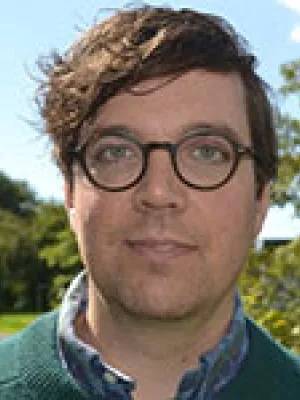
Johan Pries
Biträdande universitetslektor

Public space in a city of streets and sidewalks: repackaging urban critical theory in the development of eastern Malmö
Författare
Summary, in English
With this article I argue that applying models of urban space as little but pedestrian flows to actually existing urban space has important effects that largely aren’t factored into planning and design processes. This article explore these concerns by studying how the ideal of mobility pathways (stråk) has come to be used in Sweden, with the city of Malmö being the leading example, to imagine everyday pedestrian mobility through urban space as a way to rewire the city’s everyday life and cultural make-up. Mobility pathways become a key facet of post-industrial urban renewal, with new areas envisioned to have Jacobsian qualities designed around connective streets and sidewalks as corridors of urban life in a bid to remake the city’s public culture. More recently, mobility pathways have in Malmö also become imagined as a key tool for combatting segregation by affording a space for everyday interaction between housing areas in a city that often is presented as the most ethnically diverse and economically divided in Scandinavia. This paper does not seek to interrogate if this mode of planning has its desired effects in terms of vitality and integration than what its unintended consequences are. Rather, I will focus on how this mode of planning’s intense mappings and modelling of public spaces as flows is related to other kinds of spaces falling off the planners maps. In particular, this paper suggest that this emphasis on movement on the streets and sidewalks registers few qualities of actual uses in unprogrammed areas and in-between interfaces of urban, public space. This active disinterest in less clearly defined open spaces, often remnants of modernist planning, might have a ‘desirable’ effect in that few uses are identified to potentially upend the redevelopment plans for lucrative housing along the new pedestrian pathways on what once were mundane public spaces. Still, with public spaces increasingly reduced to streets and sidewalks, occasionally interrupted by parklets, with few possibilities to linger in unexpected ways in an urban landscape designed to promote perpetual movement, the potential for meetings between strangers which mobility pathways provide come into question. Thus, this paper set out to argue that an epistemology of the urban and urban planning taking networks, flows and mobility as its starting point risks creating new blind spots which come with their own set of problems for urban planning and design needing to be critically interrogated.
Avdelning/ar
- Institutionen för kulturgeografi och ekonomisk geografi
Publiceringsår
2021-05-17
Språk
Engelska
Dokumenttyp
Konferensbidrag: abstract
Ämne
- History
- Human Geography
- Landscape Architecture (including Planning, Design, Management)
Nyckelord
- urban space
- planning
- public space
- segregation
Conference name
Dislocating Urban Studies
Conference date
2014-05-17 - 2014-05-18
Conference place
Malmö, Sweden
Aktiv
Unpublished

